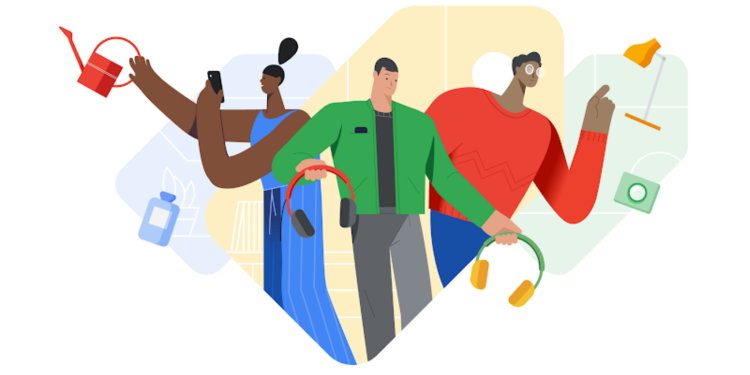testsetset
Google this week announced that Google Shopping will be free for merchants next week in the U.S. and by end of year globally. Google Shopping results will soon “consist primarily of free listings.” That’s right; until now, Google Shopping showed only paid listings instead of serving, oh, I don’t know, the best listings Google found on the web. The change is a huge win for any business owner that sells products online, and anyone who buys online, and is thus a direct attack on Amazon. It’s also bound to bring the same problems that Amazon experiences.
Froogle was born in December 2002, rebranded to Google Product Search in April 2007, and then again renamed to Google Shopping in May 2012. That last change was bigger than just a new coat of paint — soon after, Google adopted a pay-to-play model. At the time, small businesses argued they would not be able to compete with larger companies’ advertising budgets. Eight years later, when there are “hundreds of millions of shopping searches on Google each day,” the company is reversing course. The reason? “We know that many retailers have the items people need in stock and ready to ship, but are less discoverable online.” Those small businesses do matter, after all.
Google switching away from pay-to-play is massive news for ecommerce. Free listings are coming at a time when millions of stores have been forced to shut down. But the company says it’s simply accelerating existing plans — this isn’t a pandemic-driven limited-time offer. Google is permanently removing a big barrier to entry for smaller players. And yet, free listings are a double-edged sword. Anyone can start selling via Google Shopping. Also, anyone can start selling via Google Shopping. That won’t just translate to more consumer choice, but consumers overwhelmed with choice. Google will naturally pitch ads to small businesses looking to stand out. But ads won’t stop Google Shopping’s bigger inevitable problem: fraud.
All about Amazon
Every ecommerce conversation either directly or indirectly references Amazon. You simply cannot talk about online shopping and not mention the online retail giant. Everyone else in the space frankly fears the company, whether they admit to it or not.
June 5th: The AI Audit in NYC
Join us next week in NYC to engage with top executive leaders, delving into strategies for auditing AI models to ensure fairness, optimal performance, and ethical compliance across diverse organizations. Secure your attendance for this exclusive invite-only event.
Removing the ad requirement now is a smart move for Google. The pandemic has led to ad rates plummeting and online shopping taking off. Amazon’s stock is at an all-time high, while Google’s has taken a hit. (Both companies report earnings next week, so we’ll have a better idea of their financials then.)
Google argues free listings means retailers will gain free exposure to millions of people, and shoppers will get more products from more stores. It’s easy to see how Google thinks this will play out. Opening Google Shopping to everyone means more products available to consumers. More products available means more product searches and higher usage. Higher usage means more competition and more pull against Amazon. More pull against Amazon means more value to advertisers. Remember: The majority of Google’s revenue comes from ads.
Google is betting on scale, as it often does. Even though the company will no longer require ads, the long-term bet is to make more money from shopping ads, not less.
Fraud
Like many tech giants, Amazon has big problems. They include the usual antitrust and ethics concerns, as well as atrocious working conditions. But Amazon is adored for its shopping experience, which doesn’t really have issues. Except one.
More than half of Amazon’s sales come from third-party sellers. Embracing small businesses has been a huge boon for its own business, but it’s also incredibly difficult to manage. That’s why there are so many horror stories of fraud on Amazon. I’m not talking about purchasing a product on Amazon and not receiving it. I’m talking about consumers receiving a counterfeit version of a product and merchants finding their legitimate products resold at a markup. If you’re buying something important from Amazon, such as children’s toys or health care products, it’s important to check that you’re getting it from Amazon directly and not a third-party seller that ships who-knows-what in an Amazon box. Meanwhile, small businesses often spend enormous resources policing and reporting their own products being resold on Amazon by those trying to make a quick buck.
Except for a handful of its own phones, tablets, and laptops sold in the Google Store, all of Google Shopping sales come from third-party sellers. There is no easy way to ensure that a product isn’t screwing the consumer and/or the merchant. Well, at least not anymore. That’s what paid listings was helping accomplish. It becomes very expensive, very quickly to sell scam products if you have to pay every single time.
I’m sure Google will work harder than Amazon to keep fraud off Google Shopping. The company has to, after all, as it hasn’t spent its whole existence building its own store and products. Overall, Google Shopping going free is a good thing, both for consumers and for merchants. But consumers and merchants will likely have to be more vigilant, while small businesses will have to pay up to stand out. Just like on Amazon.
ProBeat is a column in which Emil rants about whatever crosses him that week.

